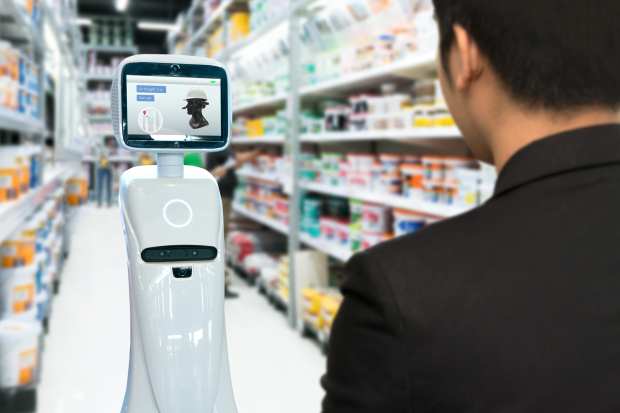Where Do Humans Fit Into Automated Retail?

The global retail automation market is expected to exceed more than $19.5 billion by 2024 at a CAGR of 11 percent between 2019 and 2024.
The next five years will see rapid growth of the automation market, but what’s driving this and which industries are seeing the greatest uptake?
The latest Automated Retail Tracker looks at how automation fits into different retail categories and industries and explores whether automation means replacing the human touch.
Automation for Air Travel
Airports have seen success using automation.
Iceland’s Keflavik International Airport, for example, recently deployed four kiosks to process traveler’s documents and verify their biometric information against their passports.
Consumers are mixed on automation and self-service in retail and other settings. Much depends upon the circumstance. A recent survey, found that prefers human customer service over automation for many travel functions. In particular, concierge services (82.6 percent), in-flight services (79.6 percent), airport concessions (78.2 percent) and boarding (64.4 percent).
Where automation excelled was in routine, less complex applications like check-in (68.3 percent) and ticketing (65.9 percent).
Despite low stated levels of interest in automated airport concessions, when presented with specific options, consumers did indicate willingness to try them out. While only 6 percent of travelers had pre-ordered food or drink for pickup at a gate-side restaurant, 66 percent would consider doing so in the future. Additionally, 9 percent of travelers had ordered gate-side delivery of food and drink, but 62 percent were open to the idea.
Inventory Automation
Due to the online channel’s encroachment on the traditional grocery model, grocery retailers are turning to automation to give them an edge. Sensor and camera systems, robotics and machine learning solutions are still in their early stages, and are being enlisted in consumer-facing applications as well as behind the scenes.
Inventory management is one emerging use case for automation. It’s a fine balance between oversupplying and wasting products vs. empty shelves and out-of-stocks and automation can help with forecasting.
Machine learning has been used to analyze sales and marketing data to anticipate demand, as well as modeling different stock level scenarios to project how much a grocer stands to profit or lose if stocking extra units.
Walmart has been experimenting with sensors and artificial intelligence (AI)-enabled cameras to track the freshness of meat and produce, predict demand and asses when items need to be replenished or restocked.
Consumer-Tracking Cameras
Using sensors and cameras to monitor inventory is one thing, but tracking consumers is quite another.
Kroger is testing such cameras at a small number of locations (just two out of its 2,800 stores). The cameras guess age and gender, but the data remains anonymous and is not stored.
Walgreens is also testing video screens connected to the doors of some of its coolers. For now, the devices are being used to count the number of shoppers passing by the doors. But future features could include the ability to track where a shopper is looking.
Self-Driving Cars
Autonomous and connected vehicles promise to transform the grocery industry. Consumers are looking for faster ways to get their goods and services — and that’s where Internet of Things (IoT) devices like connected cars come in.
Connected cars could have an impact on the way consumers have goods delivered, especially when it comes to sectors like grocery — one of the last areas where in-store shopping is holding fast. An IoT-connected car with real-time tracking and updates could change that.
Texas supermarket H-E-B is testing a new form of curbside delivery in which items are transported by self-driving car. The supermarket is partnering with automated delivery company Udelv to test the service in Texas.
Earlier this year, Kroger announced plans to partner with Nuro on a driverless food delivery service. Using Nuro’s compact, autonomous vehicles, Kroger hopes to make its products more easily accessible.
In-Home Delivery
Amid all of this talk about driverless cars and automated retail, another grocery industry trend is emerging that takes a completely different tack: in-home delivery. Amazon Key hasn’t been rolled out everywhere, but the pilot program made headlines after promising packages delivered inside of consumers’ houses. Walmart offers in-home delivery where delivered perishables are put directly into a fridge. U.K.-based Waitrose also recently began a similar delivery service where a deliver person puts goods inside a home.
This is an interesting development because maybe AI or IoT devices were used in picking and packing these products, but it is the ultimate anti-automation move to rely on humans to deliver packages inside and stock fridges.
